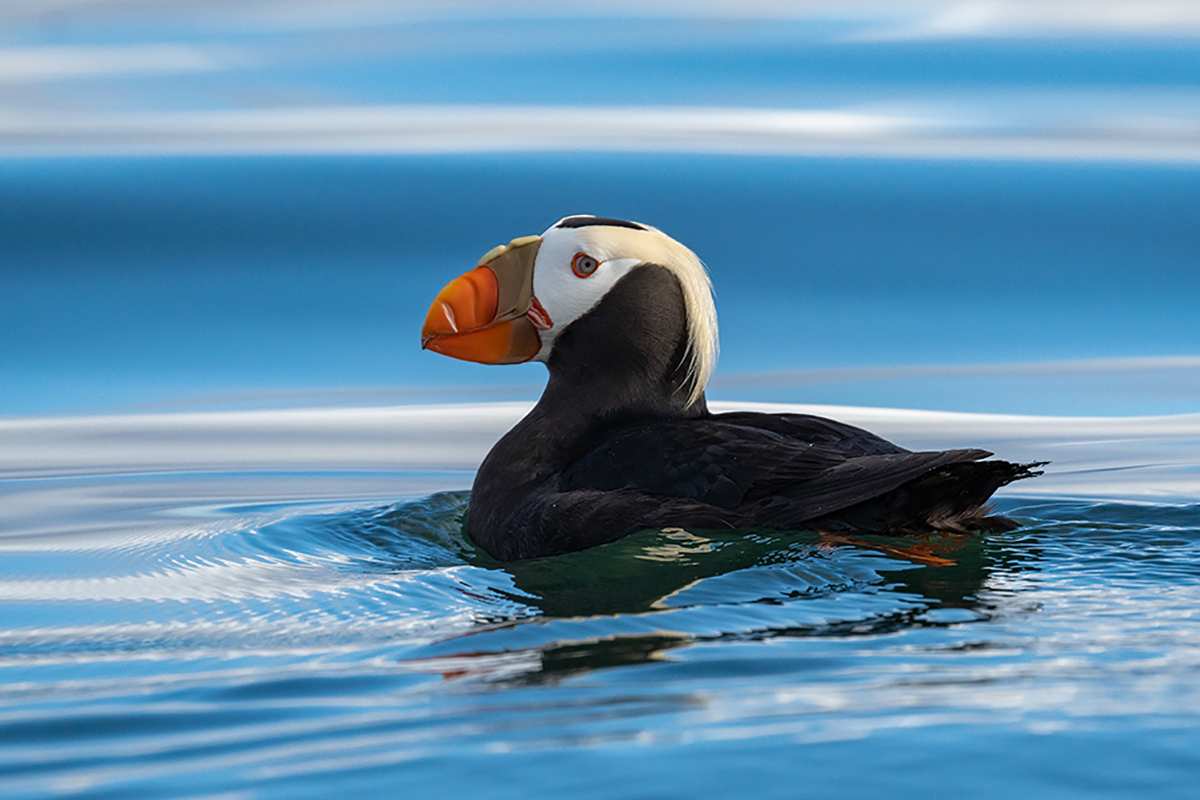Ultra-Telephoto Goes Compact
David Akoubian captures wildlife photos with the new Tamron 150-500mm VC VXD lens.
More Photo Tips | Video Gallery | Photo Gallery | Enewsletter sign-up
By Jenn Gidman
Images by David Akoubian
Big things can indeed come in smaller packages, as David Akoubian recently found out while test-driving the new Tamron 150-500mm Di III VC VXD lens for his Sony mirrorless camera, in both the far reaches of Alaska and in his own backyard. No stranger to using ultra-telephoto zoom lenses for his wildlife photography, David was impressed with the 150-500’s versatility, fast focusing ability, and image quality, all featured in a lens with an amazingly compact design (8.3 inches in length, with a 93-inch maximum diameter).
“Because I know Tamron lenses, I expected this lens to be sharp, but what the 150-500 delivered went beyond those expectations, even in low-light situations,” David says. “Shooting at the 500mm end allowed me to zoom in tight but still incorporate some of the environment around my subjects. Plus, because I’m typically handholding when I’m photographing wildlife, the compact size of the lens was a definite benefit. I didn’t notice any shoulder fatigue after carrying it around for hours. One of my biggest holdups in transitioning completely to a mirrorless camera system is that I’ve been worried longer lenses wouldn’t perform as well as they do on DSLRs, but with this lens, the images I captured rival the ones from my DSLR.”
Having a lens with a long reach like the 150-500mm can be critical when photographing certain types of wildlife, allowing photographers to keep a safe distance while still capturing intimate portraits. Not that it was totally necessary for David’s session at Alaska’s Lake Clark National Park, where the brown bears there are more acclimated to humans. “The restrictions at Lake Clark are so strict regarding food items—you can’t even bring in candy or energy bars—that the bears have stopped associating humans with food,” he says. “They’re simply curious about humans, and generally not afraid. They consider people to be part of the landscape. The bear whose profile you see here was so close I could’ve taken a few steps and rubbed its head.”
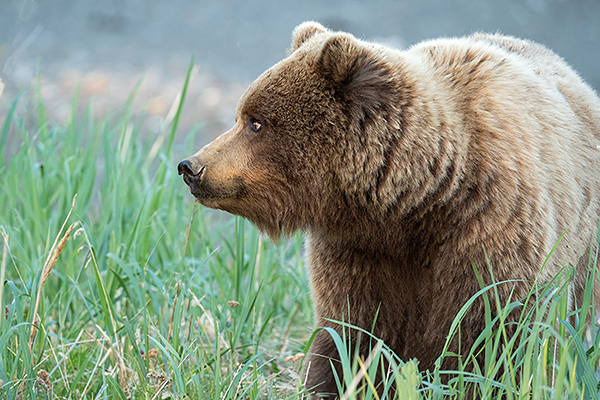
500mm, F/8, 1/250th sec., ISO 2500
Click image to view larger
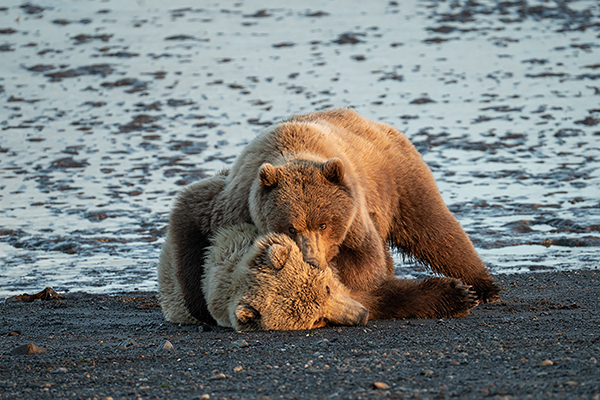
500mm, F/8, 1/250th sec., ISO 1000
Click image to view larger
The 150-500mm’s sharp, uncompromising image quality continued to come into play as David photographed Alaska’s native birdlife. “I took pictures of this loon at the seaplane airport in Anchorage,” he says. “Lisa Langell, whom I was conducting a workshop with, told me she knew of a loon that had been hanging around that airport for six years. Sure enough, the loon was there when we went back. It swam right up to us and sat there in that perfect light. The lens allowed me to capture every detail.”
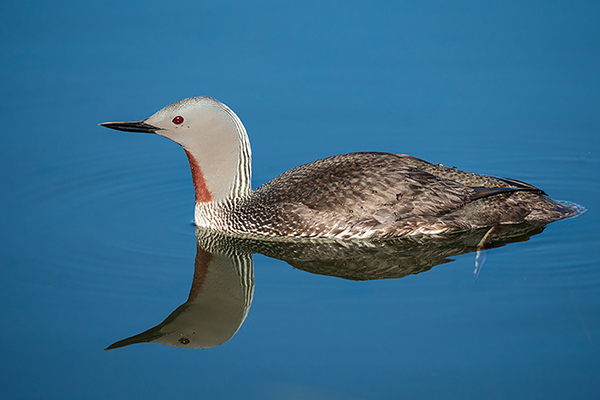
500mm, F/8, 1/2000th sec., ISO 1250
Click image to view larger
The lens also rendered perfectly the brilliant colors of a puffin in Kachemak Bay. “We were on a boat for a birding tour, where we saw both horned and tufted puffins,” David says. “This tufted puffin was near Gull Island, about 20 feet off the side of our boat. Puffins’ beaks are usually a dull, brownish-gray color during the winter months, but in the spring and summer, they turn more colorful for mating season. I was thrilled to be able to capture this one with his beak in bloom, so to speak.”
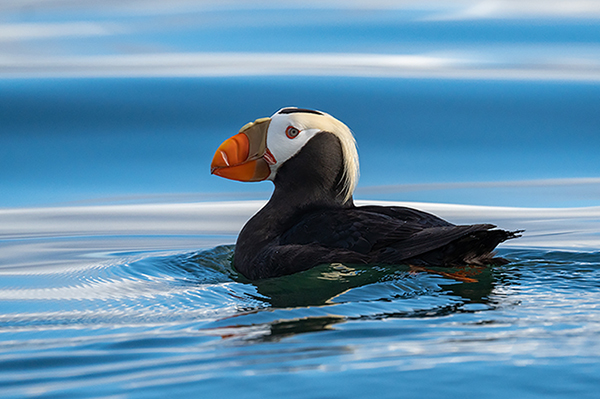
500mm, F/8, 1/2000th sec., ISO 800
Click image to view larger
Capturing bald eagles in flight with the 150-500mm also proved a smooth endeavor. “This lens, in combination with my camera bodies, did a great job of acquiring the focus, locking in to it, and maintaining it,” David says. “Often you can manage to keep your images sharp when a bird is flying left to right or right to left, but when a bird is heading straight down or moving forward toward you, lenses can struggle with that. The 150-500mm, however, didn’t have that struggle. It did a terrific job of locking on to the contrast of the bird and staying with it.”
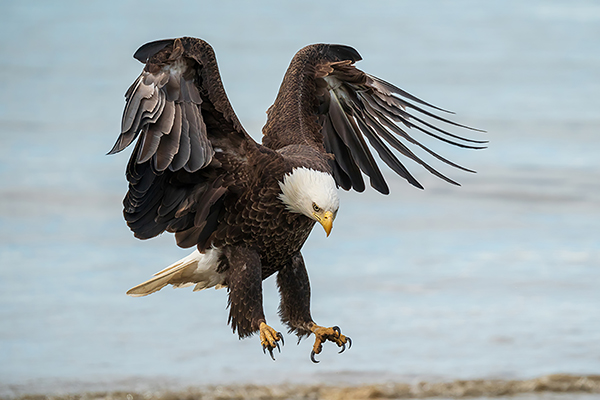
444mm, F/8, 1/4000th sec., ISO 1250
Click image to view larger
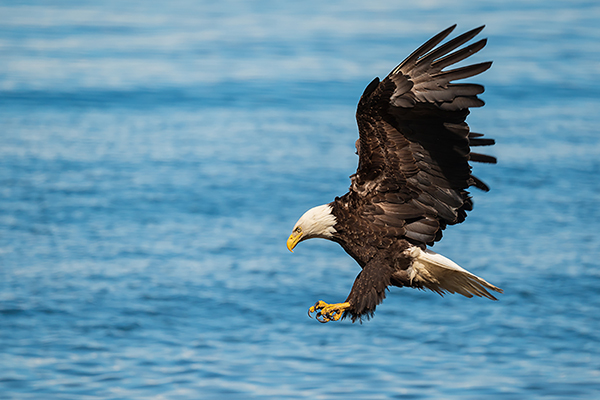
500mm, F/8, 1/1250th sec., ISO 320
Click image to view larger
The versatility of the 150-500mm allowed David to keep taking photos without changing lenses, so he never risked missing animals in action. “Without skipping a beat, I was able to capture these sea otters,” he says. “Otters often float with their feet sticking out of the cold water, because it’s the one part of their body not covered in thick, protective fur. It often looks like they’re waving, but they’re simply trying to keep this exposed part of themselves warm.”
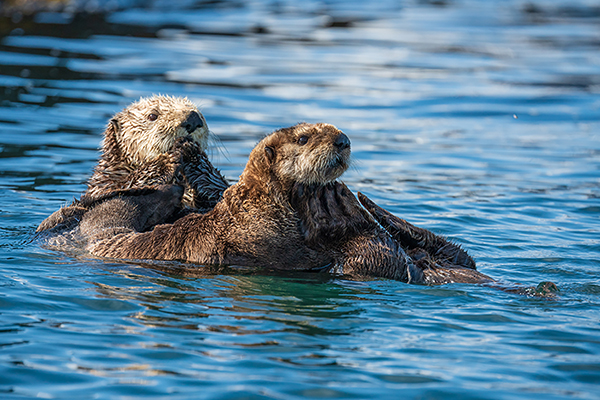
399mm, F/8, 1/2000th sec., ISO 1250
Click image to view larger
Even back home in Georgia, David was able to put the 150-500mm lens to good use. “The Eastern bluebirds in my yard usually have three clutches (that’s when they lay their eggs) per year, and the birds you see here are part of this year’s first clutch,” he says. “The two birds on the left are demanding food from their father, sitting on the right. The pole they were perched on was about 10 feet away. I love the shallow depth-of-field I’m able to get with the 150-500—the birds are so sharp, but the background falls away beautifully.”
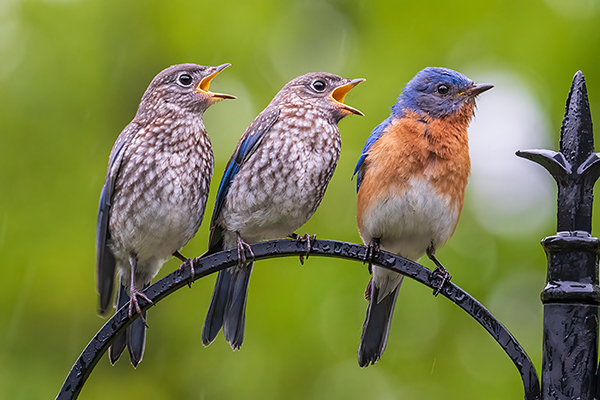
387mm, F/8, 1/250th sec., ISO 3200
To see more of David Akoubian’s work, go to www.bearwoodsphotography.com.
More Photo Tips | Watch Videos | Learn More About Tamron Lenses | Photo Gallery
